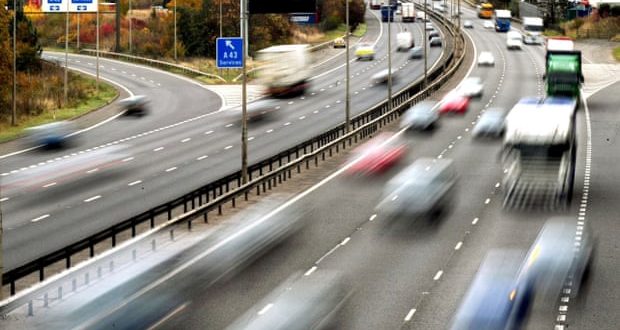Demand for bigger cars drives increase in greenhouse gas emissions, says Which?
New cars sold in the UK produce more carbon dioxide than older models, according to new research that suggests the industry is going backwards in tackling the climate crisis.
Cars that reach the latest standards of emissions use cleaner internal combustion engine technology to combat air pollution, but the relentless rise in demand for bigger, heavier models meant that average emissions of the greenhouse gas rose, according to the consumer group Which?
The latest generation of cars produced 7% more emissions than those manufactured to earlier standards, testing of 292 models released in the UK since 2017 found. Cars account for just over 18% of UK emissions, according to government figures, and reining back pollution from the sector is seen as crucial to efforts to cut the country’s carbon emissions to net zero by 2050.
Lisa Barber, editor of Which? magazine, said: “It is shocking to see our tests uncover increasing levels of carbon dioxide emissions for the latest cars that are being built and sold to UK consumers.
“Manufacturers must ensure that they are doing everything in their power to create cleaner vehicles that are fitter for our planet and its future.”
Overall, cars that met the latest emissions regulations (standards known as Euro 6d and Euro 6d-temp) produced 162.1g of CO2 per kilometre, 10.5g more than those in the previous generation (Euro 6b and Euro 6c).
That was far above the 95g target carmakers must meet across all EU sales in order to avoid steep fines. Manufacturers across Europe are racing to make and sell new electric models in order to meet the rules, although many are relying on hybrid models that combine internal combustion with battery power.
Mike Hawes, chief executive of the Society for Motor Manufacturers and Traders (SMMT), the industry lobby group, said: “We can’t comment on the results of non-official tests by commercial organisations where the methodology is unclear.
“Only the official, Europe-wide WLTP [Worldwide Harmonised Light Vehicle Test Procedure] test – the toughest and most comprehensive in the world – can be relied upon by consumers to accurately compare vehicles on a like-for-like and repeatable basis. This shows that new cars emit, on average, some 29.3% less CO2 than models produced in 2000, the effect of which drivers can see at the pump.”
However, the new findings tally with SMMT data which found that the average CO2 output of cars sold in the UK has risen for the past three years. Cars sold in the UK in 2019 produced average emissions of 127.9g of CO2 per kilometre.
The Which? analysis found that carbon emissions were rising across every segment of the car market, from smaller city cars through to SUVs, as manufacturers packed more technology into their cars. Emissions rose fastest in the hybrid segment, up by 31% between generations, in part because of the weight of two different power sources.
Newer cars performed significantly better on air quality issues, with the latest models slashing emissions of carbon monoxide and nitrogen oxides, both of which directly harm human health.
The tests also found that carbon emissions were higher than official readings carried out by EU regulators, which do not measure extended use at motorway speeds or take into account a car full of people using the air conditioning and the radio.
Doug Parr, chief scientist at Greenpeace, said the figures showed that the government should ban the sale of new petrol and diesel cars from 2030, earlier than current plans to ban internal combustion engines from 2035.
 Lebanese Ministry of Information
Lebanese Ministry of Information



